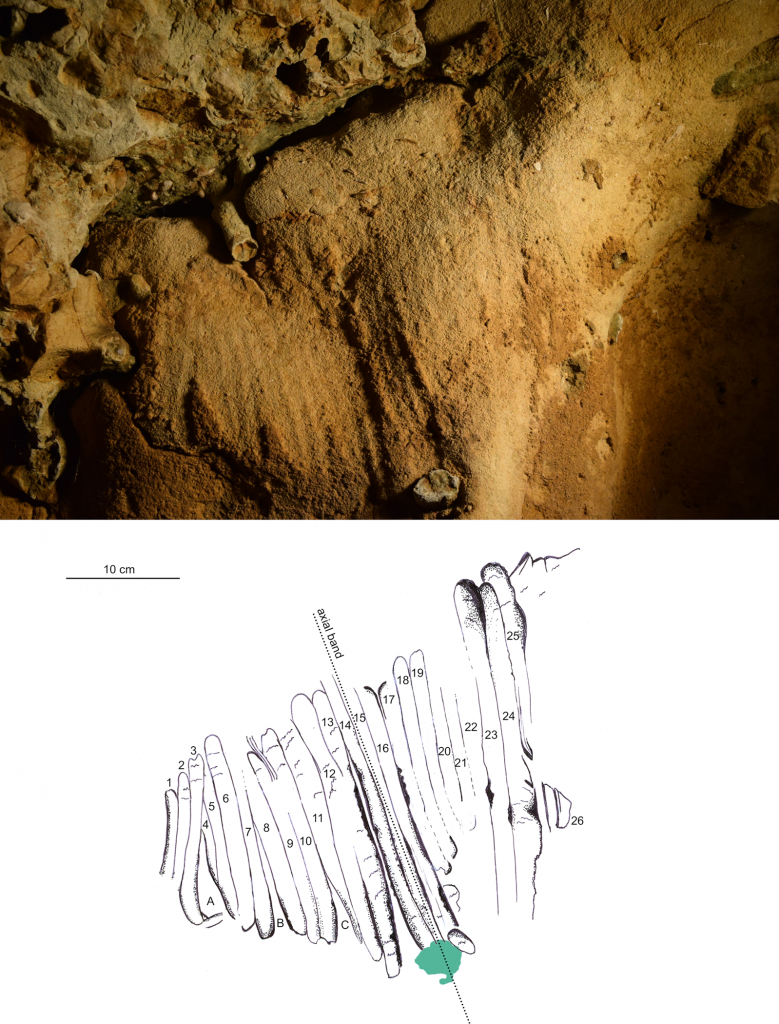The scratches, stains and parallel lines carved into the walls of a cave in Central France over 57,000 years ago has been identified by scholars as the earliest record of Neanderthal art. Their meaning, however, will likely remain an alluring mystery.
The engravings, or digital grooves, which cover the soft walls of La Roche-Cotard in the Loire Valley are the subject of a recent study published in the journal Plos One, which aims to describe the traces and prove that they were made by the hands of Neanderthals. To do this, they 3D modeled the engravings (on eight separate panels) and carried out an analysis of the sediment layers.

Examples of engravings discovered in the Roche-Cotard cave. Photo: courtesy Jean-Claude Marquet.
THE cave is made up of four connected chambers and was discovered in 1846 when quarries in the area fell on one of the entrances. Although excavations began in the early 20th century, extensive investigation of chambers that reach over 100 feet into the bank did not begin until the 1970s. The most recent research effort began in 2008 and is directed by Jean-Claude Marquet from the University of Tours.
Tools and bones were discovered in the first chamber, providing evidence that the space was used for living, and the carvings, made by pressing and sliding the fingers into the clay-covered chalk wall, were found in the third chamber. THE engravings vary widely in style, some feature a series of dots, another offers curved lines that converge to a dot, and one resembles a fan pattern.

The “triangular panel” on the wall of the cave. Photo: Jean-Claude Marquet.
To demonstrate that the carvings were made by Neanderthals, the researchers analyzed the sediments that had blocked the entrance. He showed that the cave was sealed around 57,000 years ago and that homo sapiens would not have reached this region of modern Europe until 40,000 years ago. The engravings can date as far back as 75,000 years ago.
“The anthropogenic origin of the spatially structured, non-figurative marks found in the cave is confirmed,” lead author Jean-Claude Marquet wrote in the article. “We conclude that the La Roche-Cotard prints are unambiguous examples of Neanderthal abstract design.”
Scientific understanding of Neanderthals has greatly increased in recent years, dispelling long-held notions that our cousins were primitive. This has included research into the social structures of Neanderthals and the tools they used. Earlier evidence of their engravings, however, is rather limited and largely confined to marks on bones dating to between 40,000 and 50,000 years ago.
More trending stories:
A Norwegian father hiking with his family discovered a rock wall covered in Bronze Age paintings
Follow Artnet News on Facebook:
Want to stay one step ahead of the art world? Subscribe to our newsletter to receive breaking news, revealing interviews and incisive reviews that move the conversation forward.
